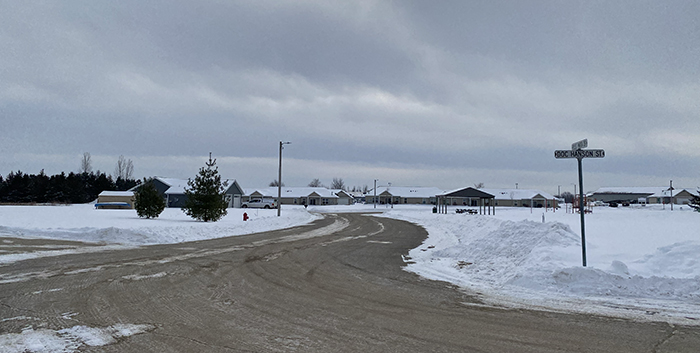NYM premiers tax rebate program
News | Published on February 18, 2025 at 9:55pm GMT+0000 | Author: Tucker Henderson
0
The City of New York Mills will continue a tax rebate progrm for new single and two-family homes within the city limits. The program is similar to one Otter Tail County had over the past few years as part of its Big Build program.
By Tucker Henderson
Reporter
The New York Mills City Council recently approved a property tax rebate program for new single and two-family homes within the city limits in January. The program acts as an extension of a similar program by Otter Tail County, which recently ended with the Big Build initiative. The city council approved a timeline of 2025 through the end of 2030 for the program.
“The rebate came about because the County’s program ended,” said City Clerk Julie Roberts. “The county shared that if any city wanted to continue the rebate as the lead administrator of the program, they could ask the county to match the property tax rebate. We are one of several cities who decided to take the lead on the program in order to continue to offer the rebate.”
The county’s rebate program specifics will all be retained in the NY Mills program and a one-sheet document and application is available from the city for anyone with any questions about eligibility, purpose, and application. Eligible participants are required to be located within the city limits and properly zoned, cannot have benefited from other local financial assistance, project is built to all required regulations, property taxes current and paid on time in full, and must be approved by city administration.
“Properties are eligible up to a $5,000 or five year rebate, whichever is reached first, of property tax paid on the added value of property,” said Roberts. “The county is also participating, so that makes it a rebate of up to $10,000 or five years of property tax rebate, whichever is reached first.”
According to Roberts, there were three new homes built under the county lead program in NY Mills and the city is hoping to continue to promote the investment of single family homes in an effort to expand. The program is also available to parties who are undertaking substantial remodels of existing property. An application will need to be completed and approved before any work is begun.
“While the program has been deemed successful, it has also been relatively labor intensive for county staff,” said Betsy Roder. “It was also acknowledged that it was part of the Big Build initiative, which was a program that ended in 2025. The program was created with an end date, and that was intentional. The goal of the CDA is to be supportive and additive, and to help kickstart initiatives like this that can eventually be taken over by individual communities.”
Roder is both a commissioner on the Otter Tail County Community Development Agency (CDA) board and is the president of the NY Mills Economic Development Authority (EDA) board. She has experience with both the county’s and the local tax rebate programs.
The county’s program, which accepted its first applications in November 2019, approved a large number of applications, including 104 in 2024 as a part of the last push for the Big Build initiative. That initiative made large progress towards its goal to build, preserve, or rehabilitate 5,000 housing units by 2025.
Total progress for the year-end of 2024 included $94.2 million in housing investment from 443 new and rehabilitated units. There were 358 of those that were new construction and 85 were rehabilitated housing units.
“I hope that the program will continue to encourage housing growth in our community,” said Roder. “NY Mills is a great place to live, work, and visit, and we have job opportunities that need people to fill them. In order to best fill those jobs and support our local businesses, we need people to be able to find housing, have the necessary infrastructure to live here, and feel welcomed into the community.
“Much of the work that we do on the EDA is about positively affecting these things that we have control over,” she continued. “This tax rebate program is a great way to embrace future growth in both population and an increased tax base over time.”
